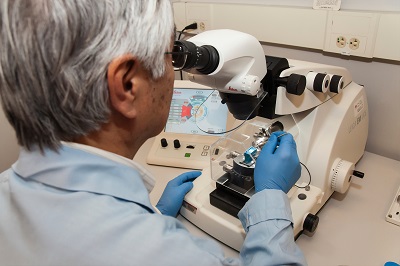What are the requirements for Class C medical device registration with CDSCO in India?
Release time:2024-08-29 14:52:27
The author:
source:
SUGAM Portal: Complete the application form on the CDSCO SUGAM portal, which is the online system for medical device registrations.
The requirements for Class C medical device registration with the Central Drugs Standard Control Organization (CDSCO) in India are designed to ensure the safety, efficacy, and quality of high-risk devices. Here’s a detailed breakdown of these requirements:
1. Application Form
- SUGAM Portal: Complete the application form on the CDSCO SUGAM portal, which is the online system for medical device registrations.
2. Technical Documentation
- Device Description: Detailed description of the medical device, including its intended use, design, and operation.
- Technical File: Includes detailed technical information about the device, such as specifications, component details, and manufacturing processes.
- Clinical Evaluation Report: Clinical data demonstrating the safety and effectiveness of the device, often supported by clinical trials or studies.
- Risk Management File: Documentation outlining the risk assessment and management processes associated with the device.
3. Manufacturing and Quality Certifications
- ISO 13485: Certification for Quality Management Systems (QMS) specific to medical devices.
- GMP Compliance: Proof that the manufacturing facility complies with Good Manufacturing Practices.
4. Labeling and Packaging
- Labeling Information: Detailed labels including device name, intended use, manufacturer details, and any warnings or precautions.
- Packaging Information: Information about the packaging materials and methods used to ensure the device's integrity and safety.
5. Safety and Efficacy Data
- Pre-market Clinical Data: Evidence from clinical trials or studies that supports the device's safety and efficacy.
- Post-market Surveillance Plan: Plan for monitoring the device’s performance once it is on the market, including reporting adverse events.
6. Fees
- Registration Fees: Payment of the applicable registration fee as specified by CDSCO. This can usually be done online through the SUGAM portal.
7. Quality Management System (QMS)
- Documentation: Evidence of a robust Quality Management System in place, including procedures and records related to device development, manufacturing, and post-market activities.
8. Compliance with Standards
- ISO and IEC Standards: Compliance with relevant international standards and guidelines, which may include ISO, IEC, or specific standards related to the device type.
9. Other Requirements
- Manufacturing License: Copy of the manufacturing license issued by the regulatory authority of the country where the device is manufactured.
- Import License (if applicable): For imported devices, an import license issued by CDSCO.
10. Additional Information
- Device Classification: Ensure that your device is correctly classified as Class C according to the CDSCO classification system. This classification determines the regulatory requirements and procedures.
- Risk Classification: Provide detailed risk classification and management documentation specific to Class C devices.
Process Summary
- Preparation: Collect and prepare all necessary documentation.
- Application Submission: Submit the application through the SUGAM portal, including all required documents and fees.
- Review and Inspection: CDSCO will review the application and may conduct an inspection of the manufacturing facility.
- Approval: Upon successful review, CDSCO will issue the registration certificate.
Ensure compliance with all CDSCO guidelines and maintain up-to-date knowledge of any changes in regulations.

Contact Us:
Whatsapp or Wechat:+86 15816864648;email address:hito.lin@grzan.cn
.png)
.jpg)
.png)

.png)